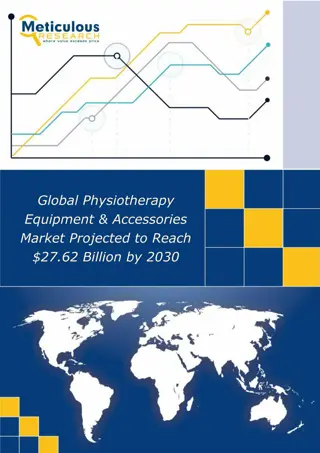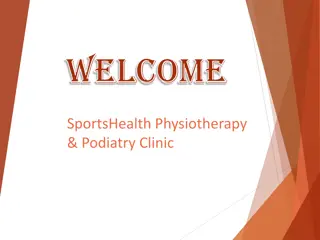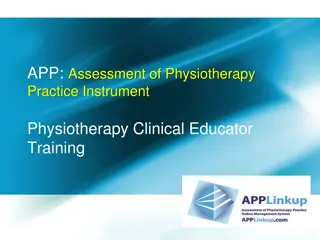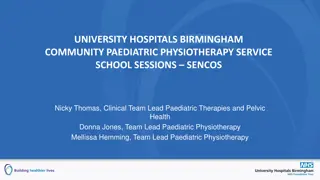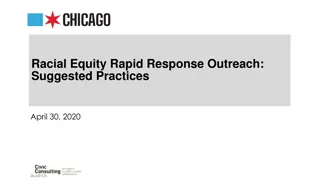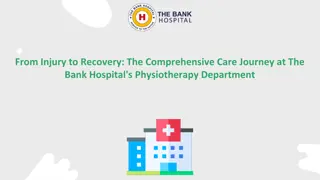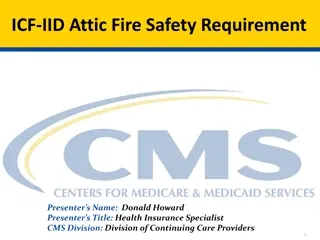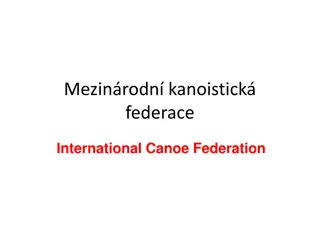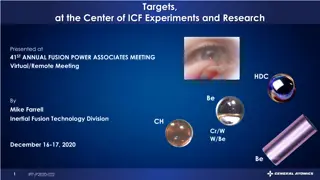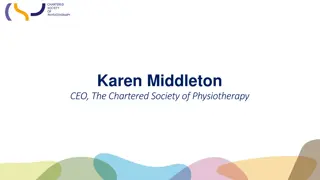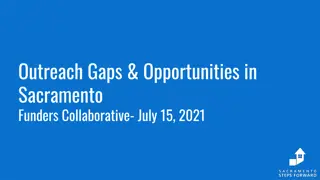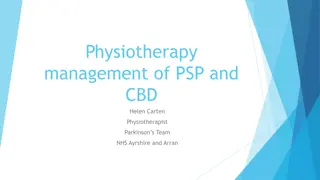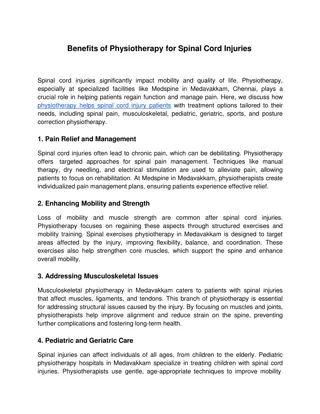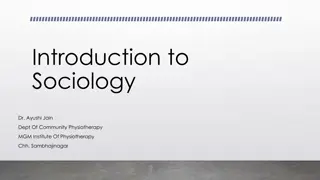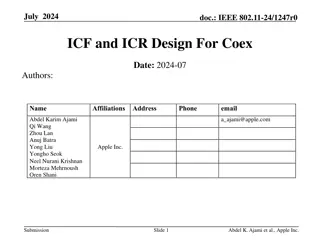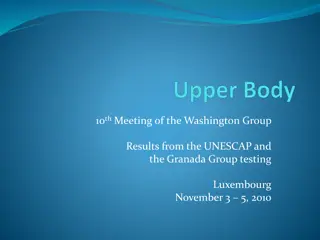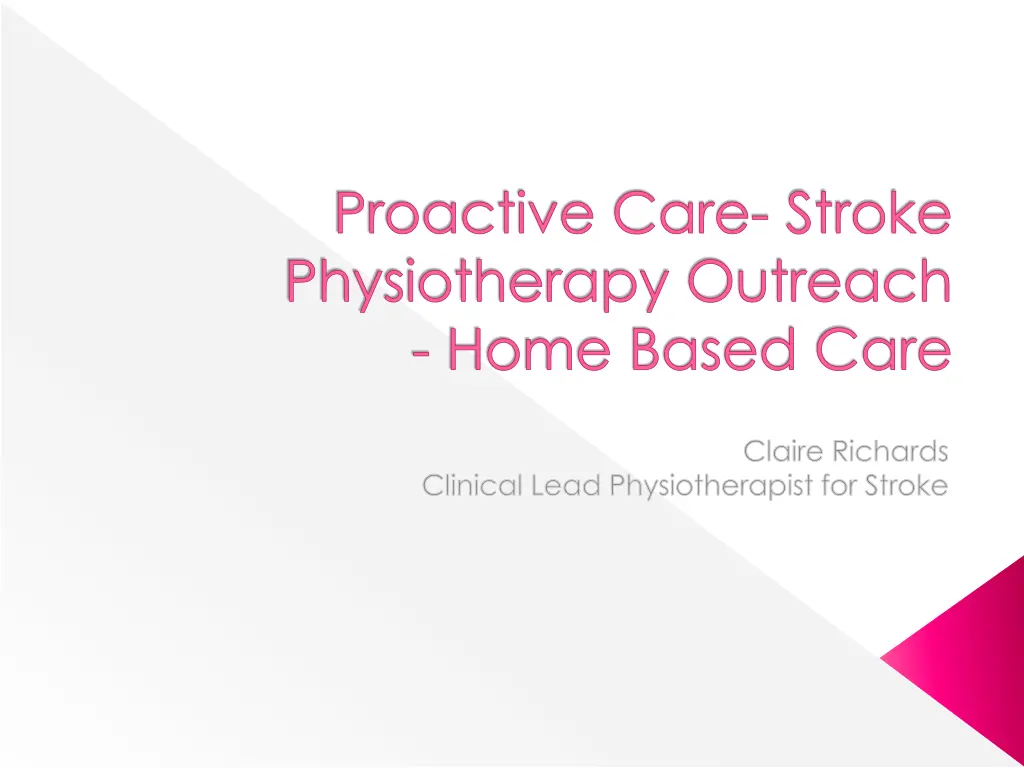
Stroke Physiotherapy Outreach & Home-Based Care in Carmarthenshire
Revolutionizing stroke patient care through proactive physiotherapy outreach in Carmarthenshire, enhancing recovery and reducing disability with specialized services catering to individual needs.
Download Presentation

Please find below an Image/Link to download the presentation.
The content on the website is provided AS IS for your information and personal use only. It may not be sold, licensed, or shared on other websites without obtaining consent from the author. If you encounter any issues during the download, it is possible that the publisher has removed the file from their server.
You are allowed to download the files provided on this website for personal or commercial use, subject to the condition that they are used lawfully. All files are the property of their respective owners.
The content on the website is provided AS IS for your information and personal use only. It may not be sold, licensed, or shared on other websites without obtaining consent from the author.
E N D
Presentation Transcript
Proactive Care- Stroke Physiotherapy Outreach - Home Based Care Claire Richards Clinical Lead Physiotherapist for Stroke
Setting the scene 500-600 new stroke patients per annum in Carmarthenshire area of Hywel Dda University Health Board Stroke is the single leading cause for chronic disability and is a long term/ chronic condition Physiotherapy criteria prior to outreach Stroke patients discharged from the hospital setting were referred to the Generalist community physiotherapy teams by written referrals The physiotherapy service prioritised care alongside other pathologies The generalist community physiotherapy teams would provide all community care for stroke patients Skill mix of physiotherapist providing the care varied (Band 6 to Band 3) Multiple re-referrals via GP/other profession during the wait for community therapy
Snap shot Audit: Old ways of working Snap shot audit of patients discharged from hospital, with ongoing physiotherapy needs, between January May 2015 (Carmarthen only) ITEM Number of new stroke patients discharge from hospital with ongoing needs The average time taken for initial community assessment after discharge from hospital Patients seen within 14 days of discharge from hospital Patients seen within 72 hours of discharge Patient experience DATA 48 48.3 days 10% 7% Isolated Chasing follow up care Abandoned No data on POC or equipment needs
The need for change.Steered to stroke patients Poor compliance with national guidelines Patient dissatisfaction in the delay in receiving specialist therapy care Extended time on physiotherapy caseload owing to un-doing bad habits developed by patient during delay in follow-up physiotherapy care Physiotherapy often the first contact for stroke patients after discharge from hospital The transition of care for stroke patients was not a preventative approach & this group are high risk
Change in Practice: What we did Proactive care (ICF) monies was utilised to facilitate a service delivery change in the Carmarthenshire stroke physiotherapy teams Recruitment of 4wte- 1 band 7, 1 band 5 and 2 band 4 physiotherapy staff Goal - Redesign physiotherapy stroke services to provide stroke specific physiotherapy outreach for new stroke patients within Carmarthenshire - Supporting recovery and transition of care between hospital and community by early community intervention- intermediate care.
Change in Practice: What we did AIMS: Improve the transition of care for stroke patients from the acute setting into the community setting through timely intervention in home/ community Deliver evidenced based stroke rehabilitation by physiotherapists specialising in stroke care in the community setting as early as possible post discharge from hospital Reduce long term need for commissioned care hours and equipment needs Reduced demand on the generalist community teams, increase availability for other pathologies Promote self-management strategies in the community setting Strive to adhere to local and national guidelines for stroke community care Improve patients functional outcomes and well-being and help them to achieve their goals sooner Prevent duplicate referrals to services and prevent readmission - - - - - - - -
Outcomes/Data Data for April 2017 to May 2018 across Carmarthenshire DATA Number of new patients Figure 200 84.4% % seen within 72 hours of discharge 100% % seen within 2 weeks of discharge 2.8 days Average time to follow up Initial teething problems Bank holiday weekend cover Staffing (leave/capacity/rotation) 1006 Reason not seen within 72 hours Number of physiotherapy contacts 100% % of patients showing improvement of 4 Outcome Measures 81.5% (163 out of 200) % of patients discharged from stroke community outreach Generalist physiotherapy, NERS What ongoing input required
Total data continued. Data Figure Example 25% (51/200) 37% (19/51) % of patients requiring ongoing NEW social care at point of discharge from hospital Of those patients, % of patients with a reduction in ongoing care needs on discharge from physiotherapy 1 carer x 2 daily to no care needs 1 carer x 1 daily to no care needs 1 carer x 3 daily to 1 carer daily 2 carers x 4 daily to no care needs 2 carers x 4 daily to 1 carer x 4 daily 61% (122/200) 60% (74/122) % of patients with NEW equipment needs on discharge from hospital Of those patients, % of patients improvement in equipment need on discharge from proactive care physiotherapy Hoist to RZF Hoist to stedy Stedy to RZF Stick to no equipment needs RZF to stick Tripod to stick Commode to no equipment needs RZF to crutch RZF to no care needs 2 x sticks to 1 stick
What does this mean? Reduced waiting time for patients to receive community follow-up care Increased capacity/availability for the generalist community team to treat other pathologies (1006 less appointments/163 less patients) Improved patient function and achieving this goals sooner- promote well being and independence Preventative approach Reduced long term care need in the community setting Reduced long term need for equipment Improved compliance with national targets and guidelines
I dont know why they had to stop after what was it 6 weeks, wish they could ve carried on seeing me It was nice not to worry about starting all over again with people I don t know, they made me laugh in hospital and they made me laugh at home Its obvious they know what they are doing, they helped me walk again PATIENT FEEDBACK The girls (physio staff) are amazing and having them come to see me at home makes going home less frightening. They helped me get the confidence to try new things that I was scared to try for myself, they helped me get my wife to see it was ok to mow my lawn!! Physiotherapy vital to my recovery, I was so glad you can see us at Its obvious they know what they are doing, they helped me walk again home straight away Its more than them just seeing me, they gave me the reassurance to live at home. They are the only people I have seen since going home. If they didn t know the answer they would find out and get back to me A friendly face was all I needed to start off with and that s what they gave me
Further Developments: Integrated Group Work Why? - A lot of travel time spent across the counties - Patients with similar needs over 2 hours apart - Chronic PT staffing deficits across the whole stroke pathway therefore limited PT availability Integrated Group Work - Carmarthen - Integrated group work for Stroke patients across the whole stroke pathway (includes other pathologies) - Staffing: 1 PT from stroke team, 1 PT from community team. OT once a month for UL group - 3 classes at present: Upper limb, low level balance, high level balance
Summary Proactive care investment has enabled the stroke physiotherapy team to transform stroke community outreach across Carmarthenshire for up to 6 weeks after discharge from hospital Patient benefits include: Reduced wait to physiotherapy contact within the community Decreased LOS Improved functional outcomes & maximise independence Reduced reliance on carers and equipment Access to specialist stroke physiotherapist for 6 weeks on discharge from hospital Improved well being Increased self management of this chronic condition Strategic benefits: Preventative approach Reduced demand for ongoing care needs Reduced patient demand for equipment needs Improved compliance with national guidelines Improved availability of the generalist community teams to treat other pathologies Value for money Integrated groups have proved crucial in delivering sustainability Further considerations need to adopt a multidisciplinary approach to community care for this cohort at high risk of chronic disability. - - - - - - - - - - - - -


